TECHNOLOGY
Binuscx: Transforming Digital Learning and Customer Experience
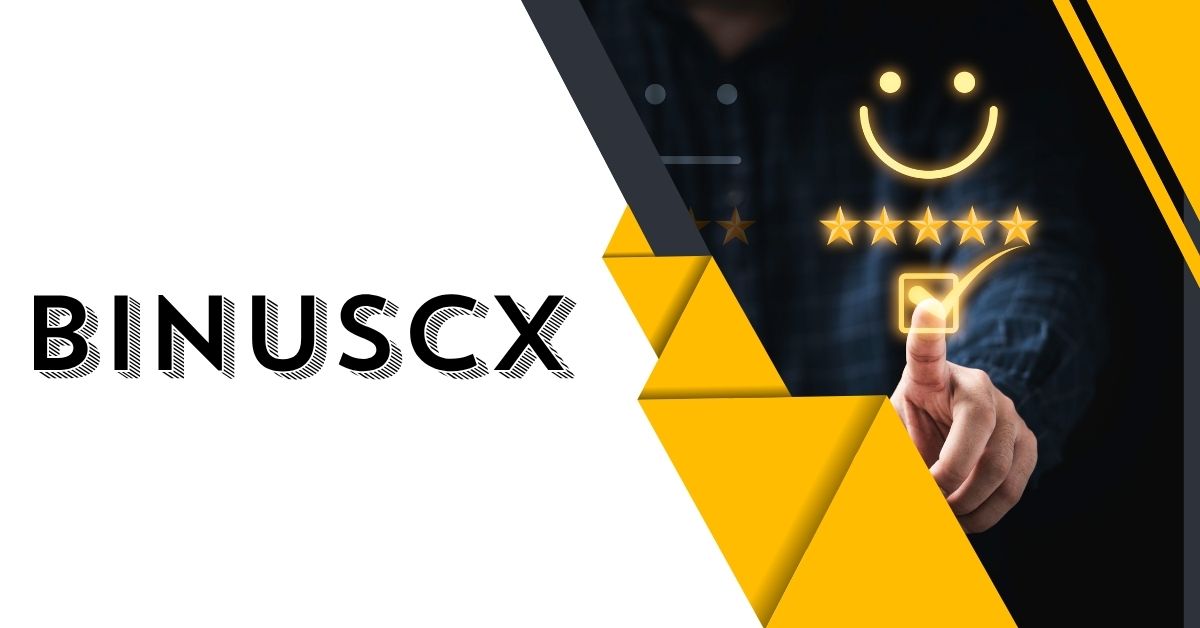
In the current digital age, Binuscx emerges as a dual-powerhouse platform transforming both educational development and customer experience. Originally launched by BINUS University, it has grown into a scalable, AI-driven ecosystem that bridges learning, soft skills, and organizational CX optimization.
What Is Binuscx?
Binuscx began as an initiative by BINUS University to empower students with essential soft skills and digital tools by offering curated, real-world learning modules. Over time, it expanded into a comprehensive CX platform used by businesses and institutions for feedback, training, and customer engagement strategies.
At its core, Binuscx combines data analytics, AI-driven insights, and intuitive dashboards to make learning and customer interaction more actionable and strategic.
How Binuscx Supports Skill Development and CX
Enhancing Student Competency
Binuscx allows BINUS University students to enroll in flexible learning modules focused on digital literacy, communication, leadership, and adaptability—skills crucial for real-world success. Students access these through a convenient dashboard, earn certificates, and engage with gamified challenges.
Powering Customer Experience Tools
The platform also serves organizations seeking to optimize how they manage customer interactions. Through real-time analytics, feedback collection, and AI-powered recommendations, businesses can tailor services to user behavior and improve satisfaction rates.
Why Binuscx Stands Out
Unlike standard LMS or CX tools, Binuscx integrates academic learning, soft-skill development, and enterprise-grade CX features within a single ecosystem. Its ability to scale from university classrooms to corporate environments demonstrates both flexibility and effectiveness. Organizations can deploy modules that suit their needs—whether upskilling students or gathering actionable customer feedback.
Real-World Benefits
Users and institutions report significant advantages: students gain confidence and career readiness, teams benefit from improved engagement and quicker data-driven decision-making, and organizations enjoy boosts in loyalty and productivity through refined customer touchpoints.
Because Binuscx continuously updates content—incorporating industry partnerships, AI personalization, and immersive learning features—the platform remains adaptive to evolving needs and emerging technologies.
Who Should Use Binuscx
Binuscx is ideal for:
-
Universities and educational institutions aiming to supplement curriculum with soft skills and applied learning
-
Businesses seeking unified platforms for employee training and customer feedback
-
Enterprises that value data-backed insights and AI-driven personalization
It is especially effective where dynamic learning, scalable deployment, and measurable outcomes are priorities.
How to Get Started with Binuscx
Users—whether students or corporate users—can access Binuscx via a centralized portal. Students login through their institution credentials, browse learning paths, earn digital certificates, and track progress through their dashboard. Businesses integrate through enterprise setups, enabling workflows for data collection, analysis, and CRM-linked reporting.
Future Potential
Binuscx is poised to expand its capabilities further with upcoming features such as AI-recommended learning paths, VR simulations for team-building and leadership, and gamified tracking to boost engagement. These enhancements align with its mission to produce future-ready learners and experience-focused organizations.
Conclusion
Binuscx offers an innovative blend of soft skills education and customer experience analytics, all wrapped in an AI-empowered, scalable structure. For students aiming to gain professional skills or organizations seeking smarter engagement tools, Binuscx delivers practical outcomes rooted in real-world data. From career development to CX transformation, its dual nature positions it uniquely as a platform built for modern learning and customer-centric growth.
TECHNOLOGY
13.0 4: Tips and Tricks for Maximizing Your Experience
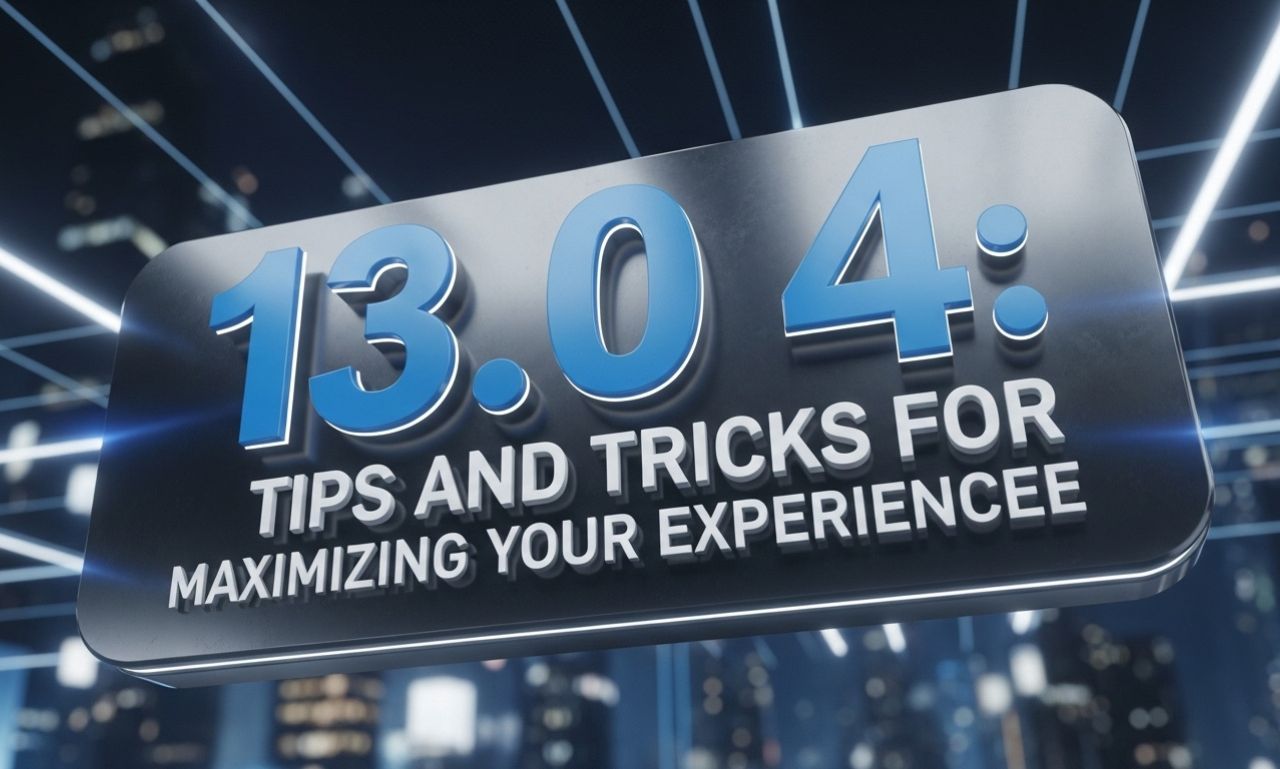
Are you ready to embark on an unforgettable journey? If you have your sights set on 13.0 4, you’re in for a treat. This destination offers a unique blend of adventure, culture, and relaxation that can elevate any travel experience. But how do you ensure your trip is not just memorable but truly extraordinary? The secret lies in maximizing every moment spent exploring this vibrant location. From local customs to hidden gems, there’s so much waiting for discovery. Let’s dive into some essential tips and tricks that will help you make the most of your time at 13.0 4!
What is 13.0 4?
13.0 4 refers to a unique experience that transcends typical travel encounters. It signifies the fusion of adventure, culture, and personal growth during your journey.
This concept encourages travelers to engage more deeply with their surroundings. Rather than simply visiting popular attractions, it invites exploration into local traditions and customs.
At its core, 13.0 4 promotes an immersive approach to travel. It emphasizes understanding the heart of a destination through meaningful interactions with locals.
By adopting this mindset, you open doors to unexpected discoveries. Culinary delights, hidden gems off the tourist path, and enriching conversations await those willing to embrace all facets of their travels.
It’s about creating lasting memories that resonate long after your trip ends. This philosophy challenges you to redefine what it means to explore new places fully.
Why is it Important to Maximize Your Experience?
Maximizing your experience during a trip to 13.0 4 is essential for creating unforgettable memories. Every moment spent exploring, tasting, and interacting contributes to the richness of your journey.
When you fully engage with your surroundings, you open yourself up to new perspectives. Each interaction can lead to unexpected discoveries that enhance your understanding of the local culture.
Additionally, embracing every opportunity allows you to break free from routine. It fosters personal growth and helps build confidence as you navigate unfamiliar environments.
Moreover, making the most of your time ensures that you’re not just a visitor but a participant in the vibrant tapestry of life around you.
Every small choice—whether trying street food or chatting with locals—can transform an ordinary visit into an extraordinary adventure filled with stories worth sharing long after you’ve returned home.
Tips for Planning Your Trip
Planning your trip to 13.0 4 can be an exciting adventure in itself. Start by setting clear goals for what you want to experience. Are you looking for relaxation, adventure, or cultural immersion? Knowing this will guide your itinerary.
Next, research the best times to visit. Consider weather patterns and local events that could enhance your trip.
Don’t forget about transportation options! Familiarize yourself with public transit systems or car rental services available in the area.
Create a flexible schedule that allows room for spontaneity. Sometimes the best experiences come from unexpected moments.
Pack wisely by checking local customs on clothing and essentials. Being prepared ensures you make the most out of every opportunity while exploring all that 13.0 4 has to offer.
Embracing the Local Culture
Immersing yourself in the local culture can transform your travel experience. Each destination has its own unique rhythm, traditions, and stories waiting to be uncovered.
Start by engaging with locals. A simple greeting or a smile can open doors to authentic conversations. You’ll learn about customs that aren’t found in guidebooks.
Participate in community events or festivals whenever possible. These celebrations often showcase regional music, dance, and art forms that offer deeper insight into daily life.
Don’t shy away from trying traditional clothing or participating in local workshops. Whether it’s pottery making or weaving, hands-on experiences create lasting memories.
Embrace the pace of life around you. Slow down to appreciate small details—a bustling market stall or a quiet tea ceremony reveals much about the people who call this place home.
Exploring Off the Beaten Path
Exploring off the beaten path can reveal hidden gems that most tourists overlook. These lesser-known spots often boast stunning landscapes, unique local art, and authentic experiences.
Venture into smaller towns or rural areas for a taste of true culture. Here, you’ll meet locals who are eager to share their stories and traditions. This connection adds depth to your journey.
Seek out nature trails that aren’t in guidebooks. The tranquility found away from crowded attractions allows for reflection and rejuvenation. You might stumble upon breathtaking views or rare wildlife.
Don’t shy away from trying activities that seem unconventional—like joining a community event or taking up a traditional craft workshop. Each experience enriches your travel narrative in unexpected ways.
Document these moments through photos and journaling; they will serve as cherished memories long after your trip ends. Embrace spontaneity and let curiosity lead the way!
Making the Most of Your Accommodations
Choosing the right place to stay can transform your experience of 13.0 4. Start by researching accommodations that reflect local charm and authenticity. Look for boutique hotels or guesthouses that offer a taste of the region.
Once you’ve settled in, take advantage of any amenities. A cozy common area might host events where you can meet fellow travelers and share stories. Don’t be shy about asking staff for recommendations—they often know hidden gems nearby.
Consider extended stays if possible; this allows you to immerse yourself deeper into daily life rather than just skimming the surface as a tourist.
If you’re on a budget, look for shared accommodations or vacation rentals that provide kitchen facilities. Cooking some meals together with new friends can lead to unforgettable moments around the table, making your stay even more special.
Budget-Friendly Activities and Attractions
Traveling doesn’t have to break the bank. Many destinations offer a range of budget-friendly activities that let you experience local culture without spending a fortune.
Look for free walking tours, where knowledgeable guides share stories and insights about the area. These tours often operate on a tips-only basis, so you can contribute what you feel is fair.
Parks and nature reserves provide excellent opportunities for outdoor adventures at little or no cost. Pack a picnic, bring your camera, and enjoy stunning landscapes while soaking up the sun.
Museums may offer discounted admission days or even free entry at certain times. Research ahead to find these deals; many places want to encourage visitors without financial barriers.
Don’t forget community events like festivals or markets. These gatherings showcase local talent and flavors—often entirely free! Embrace spontaneity as you explore unique attractions that fit your budget perfectly.
Immersing Yourself in the Cuisine
Food is a gateway to understanding culture. When exploring 13.0 4, dive into local dishes that tell stories of tradition and heritage.
Street vendors often offer the most authentic flavors. Try small bites from bustling markets or food stalls; each bite reveals something new about the area.
Don’t forget to ask locals for their recommendations. They can point you toward hidden gems that aren’t in guidebooks.
Consider taking a cooking class too. Learning how to prepare traditional meals will deepen your appreciation for the ingredients and techniques unique to this region.
Pair your culinary adventures with regional drinks to enhance your experience further. Whether it’s local wines, spirits, or non-alcoholic beverages, they all add layers of flavor and context.
Let every meal be an adventure as you immerse yourself in the rich tapestry of tastes that define 13.0 4’s vibrant food scene.
Staying Safe and Healthy During Your Stay
Staying safe and healthy during your 13.0 4 experience is essential for enjoying every moment. Begin by researching the area’s health guidelines before you leave home. Familiarize yourself with local healthcare facilities in case of emergencies.
Always keep an eye on your belongings. Use a money belt or anti-theft bag to protect valuables while exploring the destination. Be cautious when using public transportation, especially at night.
Hydration is key, so drink plenty of water as you explore new places. If you’re venturing outdoors, apply sunscreen regularly to avoid sunburns.
Don’t forget about food safety! Choose well-reviewed restaurants and street vendors that maintain good hygiene practices to truly enjoy local cuisine without worry.
Stay connected with friends or family back home. Share your itinerary and check in regularly to ensure someone knows where you are throughout your adventures.
Building Connections and Creating Lasting Memories
Connecting with others can transform your experience in the 13.0 4 realm. Engaging with locals opens doors to unique insights and stories that guidebooks often overlook.
Consider joining community events or workshops. These settings foster interaction and create opportunities for friendship beyond fleeting encounters.
Don’t shy away from striking up conversations at cafes, markets, or public transport. A simple smile or question about a dish can lead to meaningful exchanges.
Document your journey through photos and journal entries alongside new friends. Sharing these moments enriches memories, making them tangible.
Social media is another tool; follow local influencers or groups that align with your interests in the area. This connection provides real-time updates and fosters relationships even after you’ve left the destination.
Creating bonds while exploring makes every adventure more vibrant, turning ordinary trips into extraordinary narratives of shared experiences.
Conclusion
Maximizing your experience with 13.0 4 can transform a simple trip into an unforgettable adventure. By planning thoughtfully and embracing the local culture, you open yourself up to new perspectives and experiences. Exploring off the beaten path reveals hidden gems that many travelers overlook.
Accommodations should not just be a place to rest; they can enhance your journey if chosen wisely. Budget-friendly activities allow you to soak in the essence of your destination without breaking the bank. Food is often at the heart of cultural immersion, so don’t hesitate to indulge in local cuisine.
Safety and health are paramount during any trip, so take precautions to ensure peace of mind while traveling. Building connections with locals or fellow travelers adds depth to your experience that photos alone cannot capture.
Every moment spent exploring through 13.0 4 enriches your understanding and appreciation of different cultures, landscapes, and people around the world. Embrace it all for memories that will last a lifetime.
TECHNOLOGY
Naomi Swap: How It Works and Why It’s Gaining Popularity
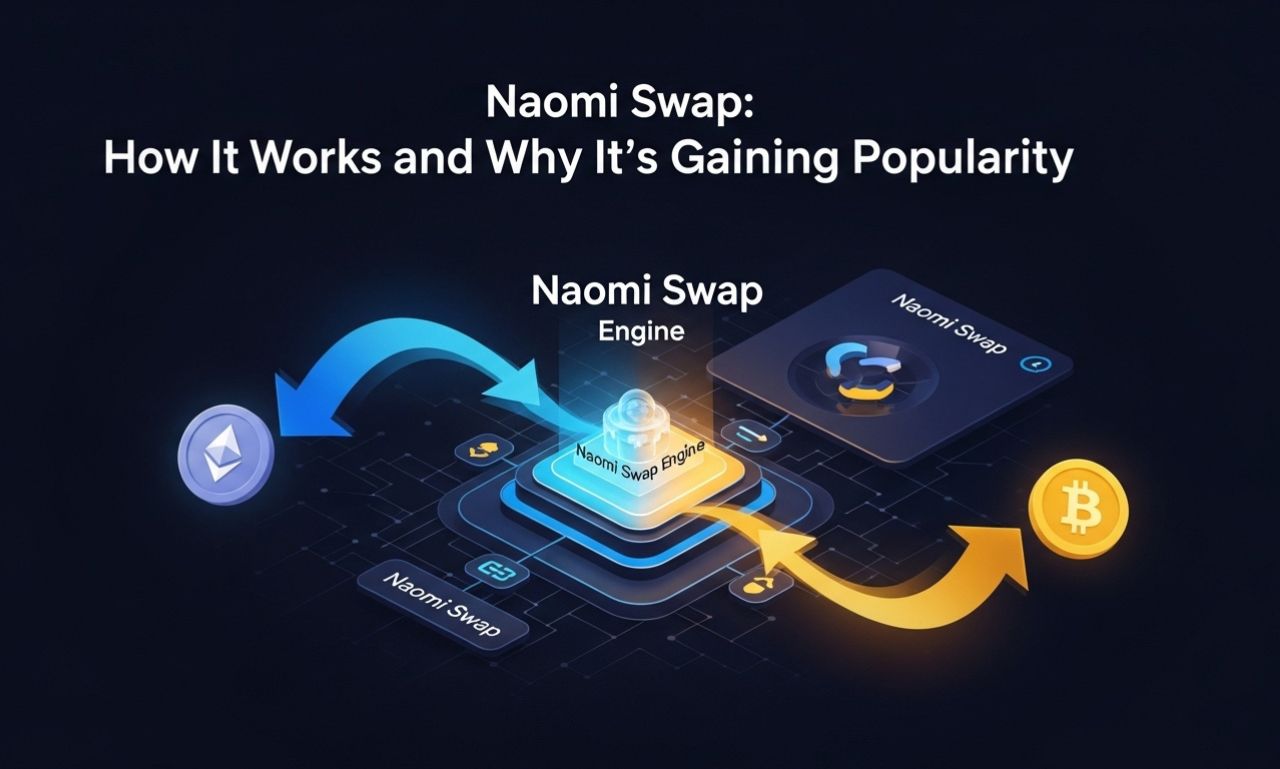
Imagine a world where you can trade items you no longer need for something new and exciting, all without spending a dime. Welcome to Naomi Swap! This innovative platform is changing the way people think about acquiring goods. Whether it’s clothes, gadgets, or books, swapping has never been easier or more accessible.
Naomi Swap taps into the age-old concept of exchanging belongings while adding a modern twist. As sustainability becomes increasingly important in our daily lives, many are turning to this eco-friendly alternative rather than traditional buying and selling methods. With its growing popularity, it’s time to dive deeper into what makes Naomi Swap such an appealing choice for so many individuals looking to refresh their possessions while minimizing waste.
What is Naomi Swap?
Naomi Swap is an innovative platform that revolutionizes the way we think about acquiring items. It allows users to exchange goods directly, bypassing traditional buying and selling methods entirely.
At its core, Naomi Swap focuses on creating a community where individuals can trade items they no longer need for something new or desired. This not only promotes sustainability but also fosters connections between users.
The concept is simple yet powerful: list what you have and browse through what others offer. Each swap brings people together while encouraging mindful consumption practices.
With a user-friendly interface, Naomi Swap makes it easy for anyone to join in on the swapping trend. It’s an exciting alternative for those looking to refresh their belongings without breaking the bank or contributing to wasteful consumer habits.
The Concept of Swapping and Its Benefits
Swapping is a simple yet powerful concept that fosters community and sustainability. It revolves around exchanging items instead of buying new ones, reducing waste while keeping resources circulating.
One major benefit of swapping is cost-effectiveness. Participants can refresh their wardrobes or homes without spending money, making it an attractive option for budget-conscious individuals.
Additionally, swapping promotes creativity and resourcefulness. People often find unique items they wouldn’t typically buy in stores, sparking joy and inspiration.
This practice also strengthens community bonds. By engaging with others in the swapping process, individuals build connections based on shared interests and values.
Moreover, it encourages a more environmentally friendly lifestyle by minimizing consumption and promoting recycling habits. Swappers contribute to a circular economy where goods are valued longer than their initial purchase price.
How Naomi Swap Works
Naomi Swap operates on a simple yet effective principle: users exchange items they no longer need for goods they desire. The process begins when you sign up and create your profile, showcasing the items you’re willing to swap.
Once your account is set up, browse through a diverse catalog of available products. You can find anything from clothing and electronics to books and home decor. Each listing includes detailed descriptions and photos, making it easy to assess what interests you.
When you spot something you’d like, propose a trade by offering one of your listed items in return. If both parties agree on the terms, the swap is finalized through Naomi Swap’s secure platform.
The app facilitates communication between users throughout the transaction process. Ratings and reviews help build trust within this community-driven environment, ensuring that everyone has a fair experience while trading their unused treasures.
Popular Items Being Swapped on Naomi Swap
Naomi Swap has become a hub for various items that people are eager to exchange. From fashion to electronics, the platform caters to diverse interests.
Fashion enthusiasts frequently swap clothing and accessories. Vintage dresses, trendy shoes, and high-end handbags are among the most sought-after pieces.
Home goods also see significant activity on Naomi Swap. Users trade decorative items, kitchen gadgets, and furniture. These swaps not only refresh living spaces but also promote sustainable practices.
Tech gadgets like smartphones and tablets have found their way into the swapping scene as well. People appreciate getting newer devices without spending too much money.
Additionally, books remain a favorite choice for many users looking to declutter their shelves while discovering new reads in return. The variety keeps things exciting on Naomi Swap!
Why People are Choosing Naomi Swap over Traditional Buying and Selling Methods
People are increasingly turning to Naomi Swap for various compelling reasons. Traditional buying and selling methods often come with hidden fees, lengthy processes, and the hassle of negotiating prices.
Naomi Swap streamlines this experience by focusing on straightforward exchanges. Users can quickly find what they need without worrying about monetary transactions complicating things.
The sense of community is another draw. Participants feel connected as they share interests in specific items, fostering a more personal interaction compared to faceless transactions on e-commerce sites.
Sustainability plays a role too; swapping promotes recycling and reduces waste. Many users appreciate contributing positively to the environment while acquiring new items.
Convenience cannot be overlooked either. With mere clicks, people can arrange swaps from their homes rather than navigating crowded stores or waiting for delivery services. This efficiency makes it an attractive alternative in today’s fast-paced world.
Success Stories from Users of Naomi Swap
Users of Naomi Swap have shared remarkable stories that highlight the platform’s impact on their lives. One user, Sarah, swapped her vintage dress for a stunning handbag. She had been looking for something unique and found it through this community-driven space.
Another user, James, traded his old gaming console for a rare collector’s item. He never thought he could get such value without spending money. The excitement of finding someone with similar interests made the experience even more worthwhile.
Families are also getting involved. A mother recently exchanged children’s toys her kids outgrew for educational books they needed. This swap not only saved her money but also helped others in the community gain access to quality items.
These stories reflect how Naomi Swap fosters connections while promoting sustainability and creativity among its users. Each successful exchange cultivates a sense of belonging within an ever-growing network.
Potential Drawbacks of Using Naomi Swap
While Naomi Swap offers numerous benefits, it’s essential to recognize some potential drawbacks.
One concern is the quality of items being swapped. Users might receive products that don’t meet their expectations, leading to dissatisfaction. Unlike traditional shopping, where you can inspect items firsthand, swapping relies heavily on trust and honesty between users.
Another issue could be the limited availability of certain items. Not every sought-after product will always be available for swap, which might frustrate those looking for something specific.
Moreover, navigating the platform may pose challenges for less tech-savvy individuals. The user interface requires a bit of familiarity; newcomers might find themselves overwhelmed initially.
There’s always a risk involved in exchanging valuable goods with strangers. Concerns about scams or dishonest practices can’t be ignored in any peer-to-peer marketplace.
Tips for a Successful Experience on Naomi Swap
To make the most of your Naomi Swap experience, start by clearly defining what you want to swap. This clarity helps in finding better matches.
Engage with the community. A friendly message can go a long way. Building rapport increases trust and fosters successful transactions.
Take quality photos of your items. Good visuals attract more interest and make your listings stand out.
Be honest about item conditions. Transparency builds credibility and ensures satisfaction for both parties involved.
Stay flexible with negotiation terms. Sometimes a little back-and-forth can lead to a mutually beneficial exchange that leaves everyone happy.
Keep an open mind when considering swaps outside your initial preferences. You might discover unexpected treasures that enrich your collection or simplify your life!
The Future of Swapping with Naomi Swap
The future of swapping with Naomi Swap looks bright and promising. As more people become conscious of sustainability, the demand for eco-friendly alternatives to traditional buying and selling is on the rise.
Naomi Swap is at the forefront of this shift. The platform not only fosters a sense of community but also encourages users to embrace a circular economy.
With advancements in technology, we can expect even smoother transactions. Enhanced user interfaces and secure payment systems will make swapping easier than ever before.
Moreover, as partnerships with local businesses grow, users might gain access to exclusive items that aren’t available elsewhere. This could create exciting opportunities for unique trades.
As social media continues to play a role in shaping consumer behavior, Naomi Swap may leverage these platforms for better visibility and engagement. Expect innovative marketing strategies designed to attract new swappers while retaining loyal users.
Conclusion
The rise of Naomi Swap is reshaping the way people think about acquiring new items. By focusing on swapping instead of traditional buying or selling, it offers a unique alternative that resonates with many. Users appreciate not only the environmental benefits but also the cost savings and sense of community.
As swapping continues to grow in popularity, platforms like Naomi Swap are likely to evolve, introducing even more features and enhancing user experiences. People are finding joy in trading their unused items for something they truly want, creating a cycle of value that goes beyond mere transactions.
With its innovative approach and strong user base, Naomi Swap stands poised to lead the charge in this new era of sustainable consumption. Whether you’re an experienced swapper or just curious about how it works, there’s no better time to explore what this platform has to offer.
TECHNOLOGY
The Future of Rpdjafud: Predictions and Possibilities for 2025
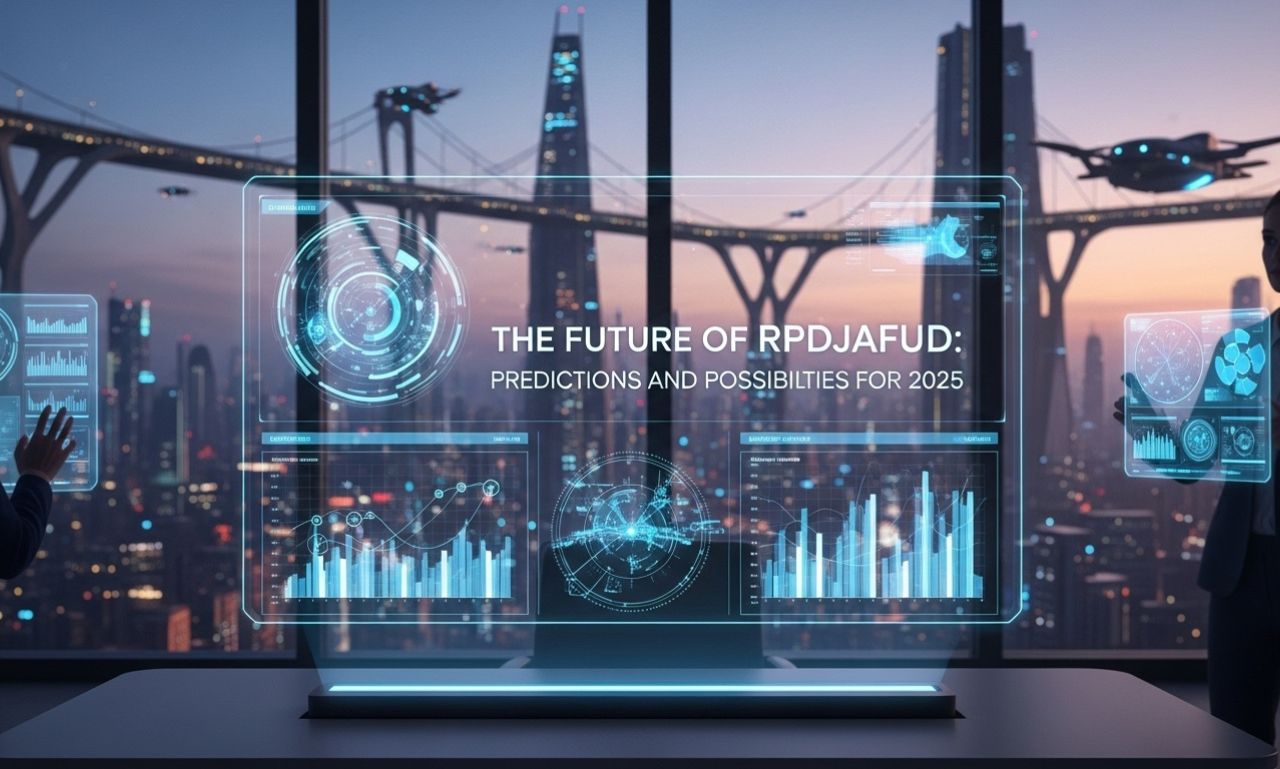
The landscape of technology is ever-evolving, and one of the most intriguing developments on the horizon is Rpdjafud. This term may seem unfamiliar to many, but its potential could reshape multiple aspects of our lives by 2025. Picture a world where innovation meets practicality in ways we can hardly imagine today. From enhancing communication to revolutionizing industries, Rpdjafud stands at the forefront of this transformation. As we explore what it means and how it impacts society, prepare for an exciting journey into future possibilities that are just around the corner.
What is Rpdjafud?
Rpdjafud is an innovative concept that has emerged in recent years, captivating both enthusiasts and professionals alike. At its core, it represents a blend of technology and creativity.
This term encapsulates various applications across industries. From digital art to AI-driven solutions, Rpdjafud showcases versatility. It’s not just about one specific area; it’s a movement pushing the boundaries of what we thought was possible.
Understanding Rpdjafud requires diving into its foundational principles. It thrives on collaboration and open-source ideas, fostering community engagement. This makes it accessible for budding creators as well as seasoned experts.
The essence of Rpdjafud lies in its adaptability. As trends evolve, so does this dynamic entity, continuously reshaping itself to meet new demands and challenges in our fast-paced world.
Current State of Rpdjafud
The current state of Rpdjafud reveals a landscape brimming with innovation. Many industries are beginning to embrace this emerging concept, understanding its potential impact.
Adoption rates have steadily increased over the past few years. Various sectors, from technology to healthcare, are experimenting with Rpdjafud applications. This growing interest is fueling research and development efforts.
However, challenges remain. Many organizations grapple with integrating Rpdjafud into existing frameworks. Compatibility issues often arise, causing delays in implementation.
Despite these obstacles, some trailblazers showcase remarkable success stories. These pioneers highlight how effective strategies can harness the power of Rpdjafud for tangible benefits.
As collaboration among stakeholders intensifies, we may see more standardized practices emerge soon. The future appears bright as companies strive to unlock the full potential of this innovative field.
Technological Advancements in Rpdjafud
Rpdjafud is on the brink of a technological revolution. Recent innovations are set to redefine its landscape, making it more efficient and user-friendly.
Artificial intelligence plays a crucial role in this transformation. Machine learning algorithms can analyze vast amounts of data, providing insights that were previously unattainable. This capability enhances decision-making processes and fosters creativity.
Moreover, integration with IoT devices allows for real-time monitoring and control within Rpdjafud systems. Users can access information instantly, streamlining operations.
Blockchain technology also shows promise in ensuring transparency and security. By creating tamper-proof records, it builds trust among stakeholders.
The emergence of cloud computing enables seamless collaboration across geographical boundaries. Teams can work together effortlessly from different parts of the globe.
As these technologies converge, they create endless possibilities for innovation within Rpdjafud’s ecosystem. Exciting times lie ahead as we harness their full potential.
Predictions for 2025
By 2025, Rpdjafud will likely experience exponential growth. Predictions indicate a surge in adoption across various sectors. Businesses may integrate Rpdjafud to streamline operations and enhance efficiency.
We can expect significant advancements in AI-driven tools related to Rpdjafud. These innovations could lead to more intuitive interfaces, making it easier for users to navigate complex processes.
Moreover, the global market might see an increase in collaboration among tech companies focused on Rpdjafud solutions. This synergy could foster creative approaches that unlock new functionalities.
As regulatory frameworks evolve, compliance within the realm of Rpdjafud is essential. Companies will need to adapt quickly or risk falling behind competitors who embrace these changes effectively.
Consumer expectations are also shifting rapidly. As awareness grows about the benefits of Rpdjafud, demand for tailored solutions could skyrocket, creating opportunities for personalized applications and services.
Impact on Society and the Business World
Rpdjafud is poised to transform both society and the business landscape in unprecedented ways. As it becomes more integrated into daily life, individuals will experience enhanced convenience and efficiency. Tasks that once took hours may be accomplished in mere minutes.
Businesses will also feel the impact. Rpdjafud can streamline operations, reducing costs and improving productivity. Companies adopting this technology are likely to gain a competitive edge, attracting customers with innovative solutions.
Moreover, the ethical implications of rpdjafud cannot be overlooked. Society must grapple with issues like data privacy and security as reliance on such systems grows. The dialogue surrounding these topics is essential for responsible implementation.
As organizations adapt to rpdjafud advancements, new job opportunities may arise while others become obsolete. This shift could reshape workforce dynamics significantly over time, making adaptability crucial for success in an evolving market.
Possibilities for Growth and Expansion
Rpdjafud is on the brink of remarkable growth. As industries adapt to rapid technological changes, Rpdjafud can play a pivotal role in reshaping operations.
The integration with artificial intelligence opens up new avenues for innovation. Companies are harnessing Rpdjafud to streamline processes and enhance productivity. This synergy could lead to unprecedented efficiency levels.
Global expansion is also within reach. Emerging markets present fresh opportunities for Rpdjafud applications, catering to diverse needs and preferences. Tailoring solutions for specific regions may amplify its appeal.
Collaboration among businesses stands as another avenue for growth. Partnerships can drive advancements, allowing organizations to share insights and resources effectively.
Training programs focusing on Rpdjafud will cultivate talent equipped to navigate future challenges. Investing in human capital ensures sustainability as demand continues rising.
Embracing these possibilities not only fuels progress but also positions Rpdjafud as an essential player in various sectors moving forward.
Challenges and Risks for Rpdjafud’s Future
As Rpdjafud evolves, it faces a landscape fraught with challenges. One significant hurdle is regulatory compliance. As governments catch up to technological innovations, new laws may emerge that could hinder progress.
Another risk comes from cybersecurity threats. With increased connectivity and data exchange, the potential for breaches grows exponentially. Protecting user information will be paramount but difficult.
Market competition also looms large. New entrants may disrupt established players in unexpected ways. Staying ahead requires constant innovation and adaptability.
Public perception can shift quickly. Misunderstandings or negative media coverage can deter users and investors alike. Building trust within communities will be essential as Rpdjafud navigates this complex future.
Embracing the Potential of Rpdjafud in 2025
As we approach 2025, embracing the potential of Rpdjafud becomes essential for individuals and businesses alike. This innovative field offers new avenues for creativity and efficiency.
Adopting Rpdjafud strategies can unlock untapped resources. Organizations that leverage these advancements will likely gain a competitive edge in their industries.
Collaboration is key in this evolving landscape. By forming partnerships with tech innovators, companies can tailor solutions to meet specific needs while enhancing user experiences.
Moreover, fostering a culture of experimentation will encourage teams to explore uncharted territories within. This mindset not only drives growth but also cultivates resilience against market fluctuations.
Education plays a vital role as well. Preparing the workforce through training programs focused on ensures that everyone understands its potential and applications.
By recognizing opportunities now, society can shape a future that maximizes the benefits of Rpdjafud for all stakeholders involved.
Conclusion
As we look to the horizon of 2025, Rpdjafud stands at a pivotal juncture. The advancements in technology and shifting societal norms are setting the stage for an exciting evolution. Businesses that adapt will find new opportunities for growth and expansion, while those who remain stagnant may face challenges.
The potential impact on society is immense. could redefine industries and change how we interact with technology daily. However, navigating this future won’t be without its risks. Stakeholders must address these challenges head-on to harness the full capabilities.
The path ahead is filled with possibilities, inviting innovators and entrepreneurs alike to explore uncharted territories. Embracing what lies ahead means being open to change and ready for adaptation as our understanding of deepens over time. Whether you’re an industry expert or just beginning your journey into this realm, staying informed about developments in Rpdjafud can empower you to thrive in a rapidly evolving landscape.
-
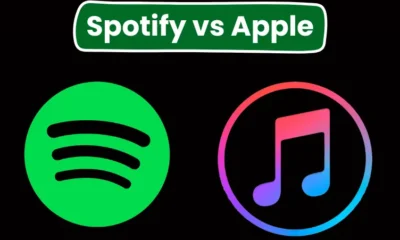
 Comparison10 months ago
Comparison10 months agoSpotify vs Apple Music: Which is the Better Music App in 2025?
-

 Blog6 months ago
Blog6 months agoDiscover the Power of digitalconnectmag.com: 5 Reasons Why It Matters Today
-

 ENTERTAINMENT9 months ago
ENTERTAINMENT9 months agoThe 15 Best Soap2day Alternatives for Streaming Movies & TV Shows in 2025
-
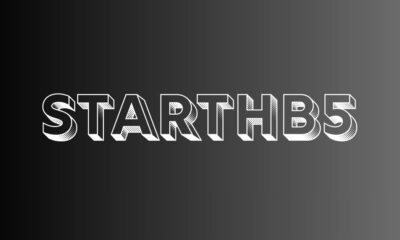
 TECHNOLOGY3 months ago
TECHNOLOGY3 months agoStarthb5: Your Gateway to Smarter Digital Innovation
-
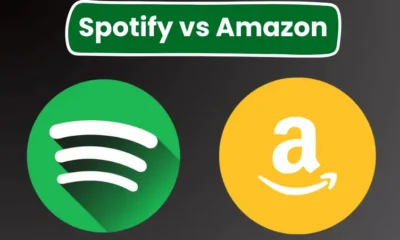
 Comparison10 months ago
Comparison10 months agoSpotify vs Amazon Music: Who is The Winner in 2025?
-
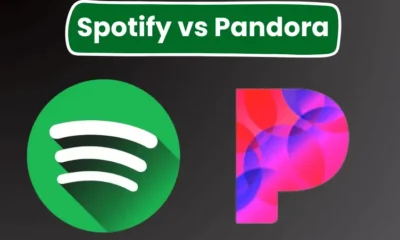
 Comparison10 months ago
Comparison10 months agoSpotify vs Pandora: Which is Better Service in 2025?
-
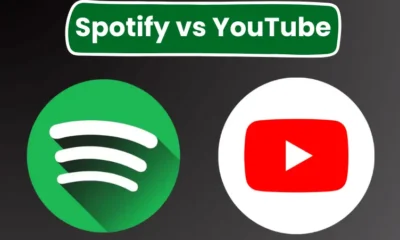
 Comparison10 months ago
Comparison10 months agoSpotify vs YouTube Music: Which is Better for You in 2025?
-
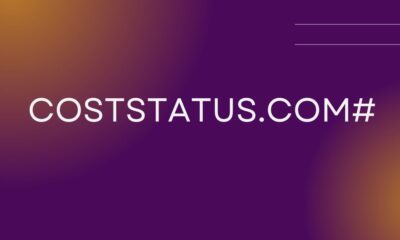
 BUSINESS9 months ago
BUSINESS9 months agoCostStatus.com#: Your Ultimate Guide to Money Management
